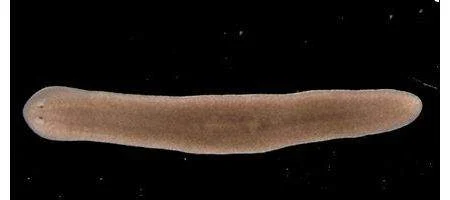A species of flatworm has been discovered to be potentially immortal – raising hopes that the ageing process in humans could be combated.

“We’ve been studying two types of planarian worms; those that reproduce sexually, like us, and those that reproduce asexually, simply dividing in two,” says Dr Aziz Aboobaker from the University of Nottingham’s School of Biology.
“Both appear to regenerate indefinitely by growing new muscles, skin, guts and even entire brains over and over again.”
Usually, when stem cells divide — when wounds are healing, or during growth and reproduction — they start to show signs of ageing. They lose their ability to divide, and so become less able to replace exhausted specialised cells in body tissues.
However, according to Aboobaker, planarian worms and their stem cells are somehow able to keep their cells dividing and avoid the ageing process.
The team believes the key to this effective immortality lies in telomere length. As cells divide to replace those lost, copies of the genetic material must pass on to the next generation.
Protecting the ends of the chromosomes, telomeres prevent them from fraying or sticking to other strands. But each time a cell divides, the telomere cap gets shorter, eventulally preventing the cell fromdividing.
The planarian worms, Aboobaker believes, actively maintain the ends of their chromosomes in adult stem cells, leading to theoretical immortality.
Previous work has shown that telomeres can be kept in good shape through the activity of an enzyme called telomerase. However, in most sexually reproducing organisms, this is only really active during early development, after which telomeres start to shrink.
The Nottingham team says it’s identified a planarian version of the gene coding for this enzyme, and found that asexual worms dramatically increase the activity of this gene when they regenerate. This allows stem cells to maintain their telomeres as they divide to replace lost tissues.
Weirdly, though, sexually reproducing planarian worms don’t appear to maintain telomere length in the same way – surprising, since both types appear to have an indefinite regenerative capacity.
The team believes that sexually reproductive worms will eventually show effects of telomere shortening; or elseare able to use another mechanism to maintain telomeres that doesn’t involve the telomerase enzyme.
“Asexual planarian worms demonstrate the potential to maintain telomere length during regeneration. Our data satisfy one of the predictions about what it would take for an animal to be potentially immortal and that it is possible for this scenario to evolve,” says Aboobaker.
“The next goals for us are to understand the mechanisms in more detail and to understand more about how you evolve an immortal animal.”






